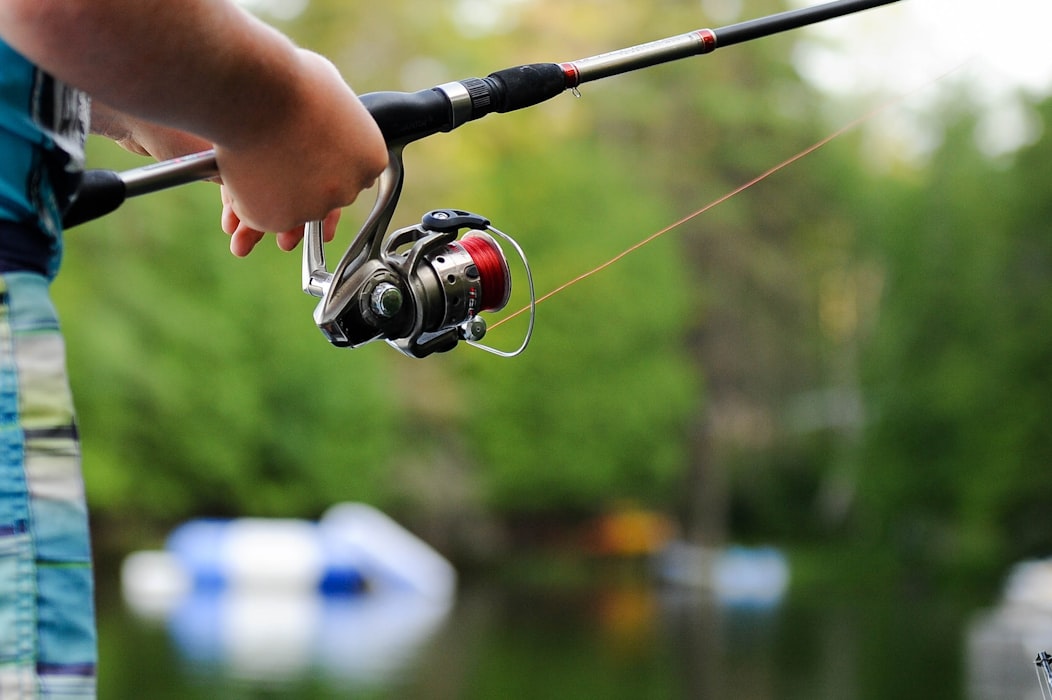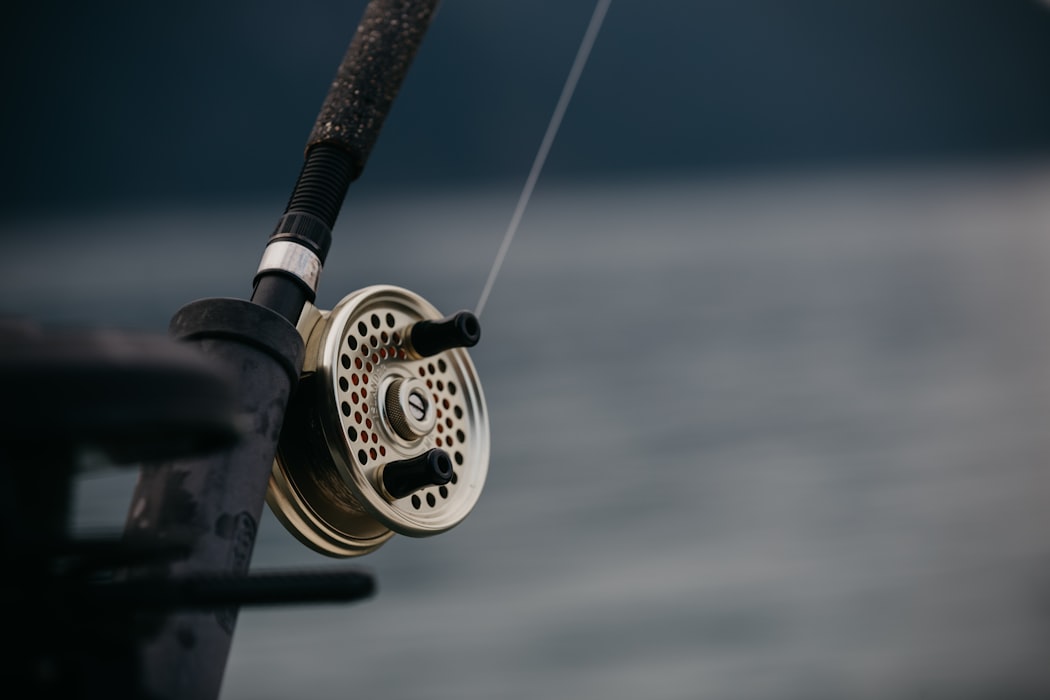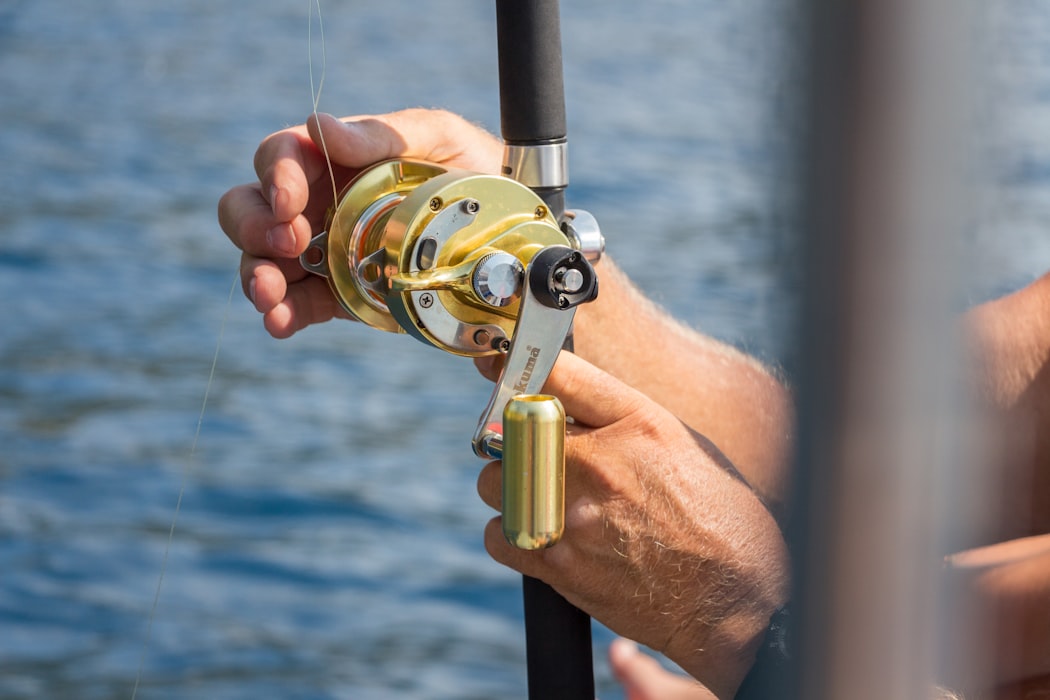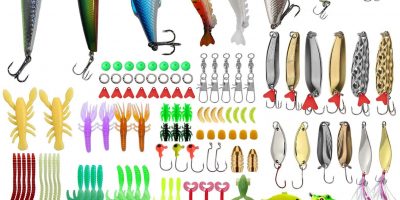When you’re fishing, a decent rod is the most valuable thing about your package. Fishing is widespread, and the only thing you need to start is finding the right reel and knowing how to throw a fishing rod. Casting with a rod from your fishing ground will increase your chances of catching large fish and minimize your chances of spoiling them.
How To Throw A Fishing Rod
While practice is an essential factor, you should take a few tips for your next fishing trip. Here are the right steps on how to throw a fishing rod!

How To Throw A Fishing Rod: Spinning Reel
Spinning reels are excellent fishing instruments for beginners and are the most common casting reels for beginners because of their relatively low cost and easy maintenance. Spincasting is often the easiest method to master when learning how to fish.
In comparison to open spinning reels, spinning reels come with the line in a cardboard box intended to eliminate tangles. Although less powerful and less accurate than open-face reelers, it can still be used to cast light and heavy lures without breaking down your fishing lines.
A rod of 7 foot, a spinning reel, and a test line of 6 to 10 pounds are included for casting 1/16-3/4-ounce lures.
Step 1
Face the water area where you expect to place your line. You want to know that you are in the right direction before you begin to cast your thread. Bend your knees a little lower and allow yourself a more secure base. Check that the hips and shoulders are square to the mark. If you find it more comfortable, you can also slightly angle your position with the non-dominant side.
Step 2
Reel the line such that the bait is 12–15 inches from the tip of the hook. Turn the reeler crank clockwise until the lure is about 1 foot from the end of the rope. This puts the line in the right position for an excellent, powerful cast.
Step 3
Grip the rod handle with the thumb just below the turn. The handles of most spin cast rods have a recessed seat with a trigger-like underside projection. Place your index finger around this projection to ensure a safe grip.
You have the option to hold the rod right or left. Most fishers prefer to cast their dominant hand on the spinning gear. You have to change your hands after your cast if you want to cast and reel with the same side.
Step 4
Click the button on the reel back and hold it. Shift the casting hand’s thumb up until the pad rests over the button. Then press firmly on the button. Depressing the reel button disengages the spooled line that allows it to fly when the casting movement starts.

Step 5
Raise your casting arm before you put your palm in front of your nose. Let the action come from your elbow instead of your shoulder – so you’ll get a more definite hit when you finish your cast. Once the palm of your casting arm is in front of you, the rod itself will be either upright or only directly behind you.
Step 6
Sweep the rod far forward. Turn the direction to your casting hand in one fluid motion, holding the rod’s handle full arm length in front of your face. Bring the tip of the rod to an end at 30 degrees angle, or generally known as the “10” spot.
Step 7
Toggle the bobbin button as the rod approaches eye height. When you do, the energy of the reel will drive your bait or lure to your target. The line then stretches rapidly until you press the buckle button again, or the bait or lure enters the surface.
When your bait or lure reaches your target, press the reel button again. Pressing the button for a second time will slow your bait ‘s flight and make it easy and pleasant to move where you want it to land. It will only be a matter of time from there as you sit back and wait for a tell-tale bite pull.
How To Throw A Fishing Rod: Baitcasting
Baitcasting is a reel casting style that depends on the lure ‘s weight to extend the line to the target area. Baitcasting requires a rotary spool or “free spool” on the top of the rod.
Learning how to use baitcasting is an acquired skill, but once you get the technique hung, you cast your lures right into the structures in which fish feed and hang with these popular saltwater reels.
Step 1
Stand in front of the goal area. Square your back and knees with the water part you like to catch for your lure or bait. This helps to make sure the line is real.
If you choose, you should move your place so that your dominant foot is back while you will take your rod back to start the cast. Just make sure you don’t give away your balance.
Step 2
Switch the drag and friction of the reel. When you first detach your baitcasting rod, it is smart to change the drag and tension setup to a suitable amount for you. You will do so by rotating the magnetic wheels behind the rod just above the grip until you reach the right touch. Thus, the line will easily peel off the reel when you cast.
Baitcasting rods have a complicated nature, so if you’re not careful, you can easily throw the settings out of control. Which is why it’s best to make a trained expert work on them.
Step 3
Reel your lure from the tip of the rod in 12 to 15 centimeters (30 to 38 cm). Switch the reel crank in the clockwise direction and lengthen the thread in the same direction. Get your bait or lure from the end of the rod around 1 ft (0.30 m) to ensure maximum leverage and momentum.
Turn the rod so that the bobbin and spool are on top. When you position the reel mechanisms so that they face up, you can use your wrist to get a decent snap.
Step 4
Grip the rod over the spool with your fist. Place the thumb on the exterior side of the spool at a small angle rather than press it against it. This stops you from unintentionally obstructing the reel and allows you more control over the line traffic.
Most fishers cast baitcasting rods with the same hand, as with spinning rods. If you want to do both acts with the same hand, you will have to change your grip after casting.

Step 5
Click the release button on the reel spool with your casting hand thumb. By hitting the release button, the spool is disengaged and can be turned freely during the cast, which allows longer casts. Place your thumb over the exposed spool wheel after the spool release is hit to prevent the spool from being unwinded.
You can see a small button and a bar on the back of the handle on most baitcasting reels, just below the reeling spool, which you can reach easily with your thumb. On older models, the release spool can instead be located on the rod’s outer spool side.
Step 6
Carry the casting arm to the shoulder and back. Lift the tip of the rod to the side before it points directly behind you. Crook out your bent elbow on your chest when you’re about to hit a ball. Your elbow or rod should not be held at any particular angle. Only put it in someplace that looks right for you.
Step 7
Sweep the rod forward while your thumb is removed from the spool wheel. Turn the rod path with a quick whip-like movement to start the cast. When you pull your thumb away from the spool, the bait or trap zooms towards the target, allowing the line to relax freely. Complete the cast with the rod pointing in front of you at 10 a.m.
Break your thumb on the bobble spool right before it hits the surface. Press your thumb to “feed” the line lightly, or slow it down smoothly and gradually. Try to make sure it stops turning entirely in your target area before it touches down.
Casting Tips That Can Help

Learning how to cast far away will help you get a good catch.
First Tip
The way you handle a rotating reel will play a significant role in casting space. Most people are missing it or are not even paying attention to it. It should face the ground just before you throw the rod back. Such a positioning should also be maintained when you reel in the fish.
Second Tip
Another important thing is the sort of fishing line you use. A braided and a monoline are the two most common. A standard error is to put too much or too little fishing line in your reel, especially if you are a beginner, and should follow your reel capability instructions and act accordingly.
Third Tip
Finally, the wind is never your friend, and it will not be useful to cast your lure in the same direction as the wind is blowing. Turn your back or side to it to help cast space. If you need to throw your bait or trap into the sea, hold it as close as possible to the surface. The near the lure or trap to the surface, the less wind is drawn to it. Stop casting in the wind by casting overhead.
Final Words
Casting is one of the primary skills in angling and maybe the difference between catching and failing. Sometimes, there is a gentle flick into the margins, while casting over 100 yards at other times is the only way to get to the right fish without spoiling them. The same goes for casting on the beach, where you have to tackle the best fishing spot. By learning and following the above guidelines, you will be able to reach the perfect casting on a few fishing trips.


